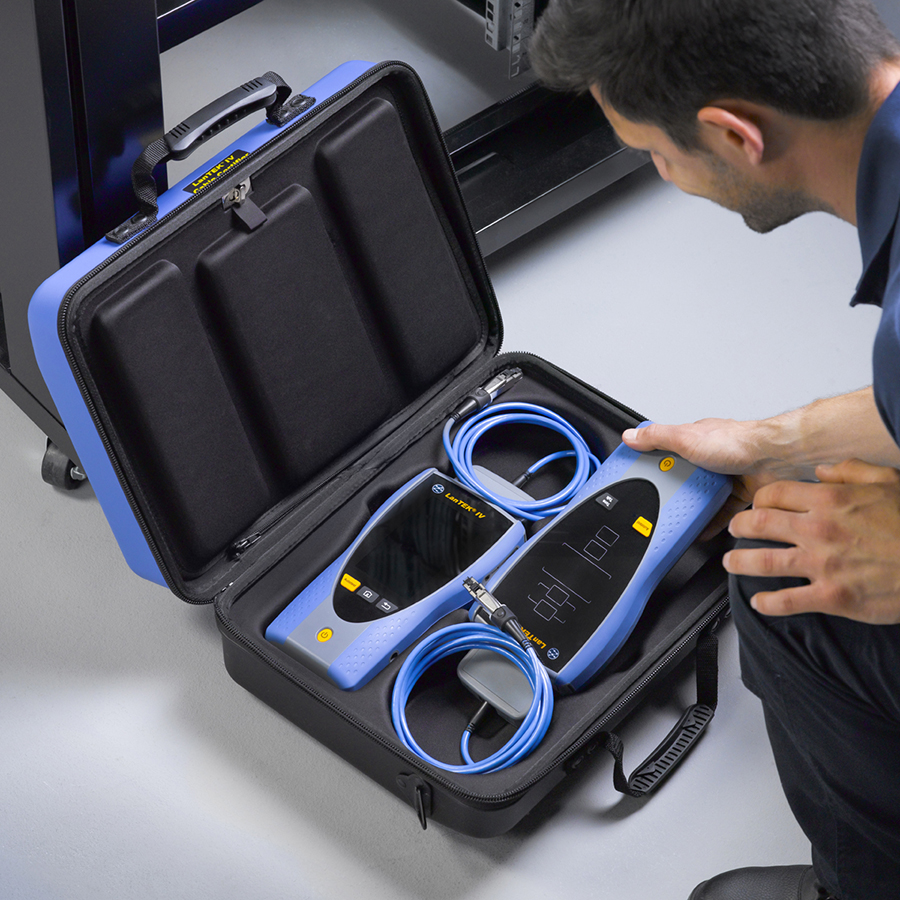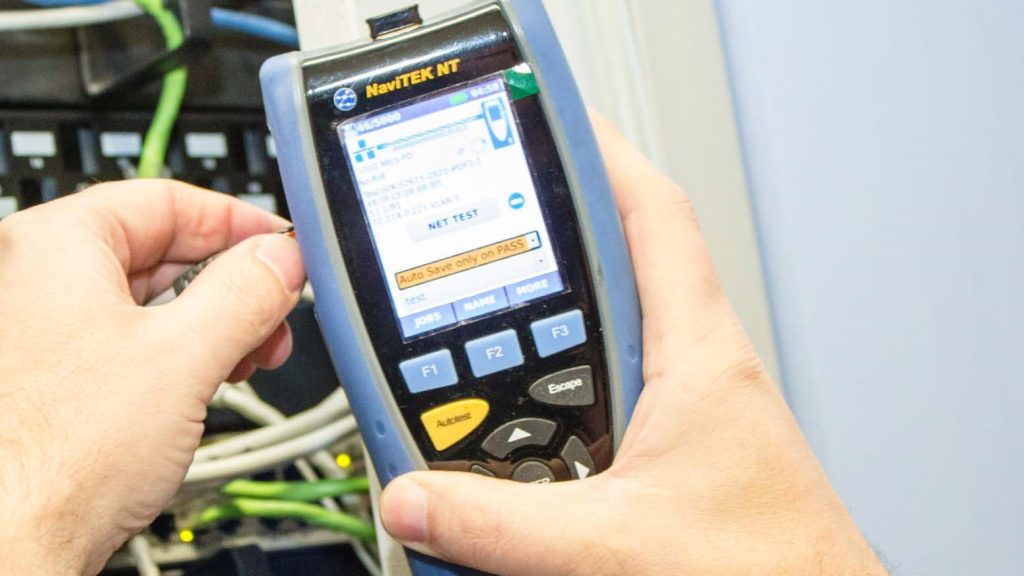The importance of measuring fibre loss in fibre optic links
Measuring fibre loss is pivotal in ensuring fibre optic cable installations have the capacity to support the demanding requirements of today’s high-bandwidth applications. But what is insertion loss and how is it tested?
What is fibre loss?
Also known as insertion loss, or attenuation, fibre loss is the total amount of power lost across a link, measured in decibels (dB). A fibre optic link is comprised of the cable, connections, and splices, with ISO and TIA standards bodies having defined dB allowances for each.
There are two tiers of fibre optic cable certification tests, each of which utilises different types of test equipment to characterise the performance of fibre cabling.
Tier 1 certification documents the insertion loss and length of the cabling using a light source and power meter to inject a known amount of light into one end of the fibre and measuring the power at the other end. The difference between the two power levels is the insertion loss.
Tier 2 certification adds an OTDR (Optical Time-Domain Reflectometer) test. An OTDR is a device that injects pulses of laser light into a fibre, then measures the time and intensity of light that is reflected back to the OTDR. This allows the OTDR to “see” events on the link such as connections and splices and measure their loss. It can also measure the loss of the fibre itself to identify the location of bends or kinks in the cable that introduce loss into the system.
Find out more about fibre loss in our Whitepaper here.
Understanding fibre loss limits
The ISO and TIA standards bodies have defined dB allowances for fibre loss, connections, and splices. These three components comprise the cabling system and the values are used to calculate a loss budget, which is the maximum amount of loss allowed for the link to pass certification. Calculating the loss budget is a matter of multiplying the length of the cable by its attenuation coefficient which determines the maximum loss for the fibre, then summing up the number of adapters/connections and splices to arrive at the total allowable link loss.
However, allowable insertion loss for high-bandwidth applications is quite low. For example, the ISO/TIA standards allow a maximum loss for a connection of 0.75dB. With a connection on each side of a link, a high-bandwidth application that allows just 1.5dB of total loss would not allow for any loss in in the fibre. This means the connection losses need to be less than the standard allows to account for any loss in the fibre itself.
Don’t settle for the minimum
Tier 1 certification may be the minimum requirement but the fact that it does not identify whether each component in the link is within specifications means that Tier 2 certification provides a far superior test. This allows installers to correct potential failure points before the network is turned over to the owner/operator.
Get full details on how to conduct a Tier 2 certification in our Whitepaper here.
Depend On Us for fibre cable certification
As fibre networks expand, you can depend on the highly experienced, global TREND Networks team to innovate new solutions to help installers and technicians to get the job done.
Learn more about FiberTEK Tier 1 Certifier and FiberMASTER OTDR Tier 2 Certifier or download our new Whitepaper “Options for testing and certification of fibre optic cabling” – NOW!
If you have any questions about selecting the right equipment for your fibre testing requirements, contact our expert team.






